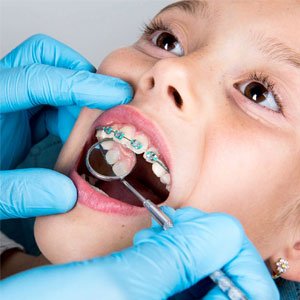
Orthodontics
Key Components of Orthodontic Treatment:
Braces: Traditional braces consist of brackets attached to each tooth, connected by wires. These components work together to gradually move the teeth into their desired positions. Modern braces are more comfortable and aesthetically pleasing, with options like ceramic braces and lingual braces that are less conspicuous.
Clear Aligners: In recent years, clear aligners, such as Invisalign, have gained popularity. These custom-made, removable trays are nearly invisible and offer a more discreet alternative to traditional braces. They are particularly favored by individuals who want a more flexible and less noticeable orthodontic solution.
Retainers: Once the desired tooth alignment is achieved, retainers are often prescribed to maintain the results. Retainers help prevent relapse by holding the teeth in their new positions and ensuring long-term stability.
Benefits of Orthodontic Care:
Improved Aesthetics: One of the most apparent benefits of orthodontic treatment is the enhancement of a person’s smile. Straighter teeth contribute to a more attractive and confident appearance, boosting self-esteem and social confidence.
Enhanced Oral Health: Properly aligned teeth are easier to clean, reducing the risk of plaque buildup, tooth decay, and gum disease. Orthodontic treatment can also address bite issues, preventing abnormal wear on teeth and minimizing the risk of jaw joint problems.
Better Functionality: Correcting misalignments improves the functionality of the teeth and jaws. This can lead to more effective chewing, reduced speech difficulties, and decreased strain on the jaw joints.
Prevention of Long-Term Issues: Orthodontic care in early adolescence can prevent more severe problems in adulthood, such as impacted teeth, TMJ disorders, and difficulty in eating or speaking.
